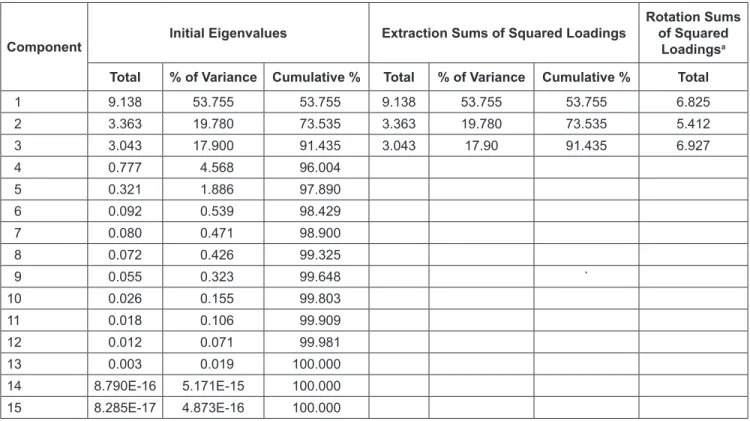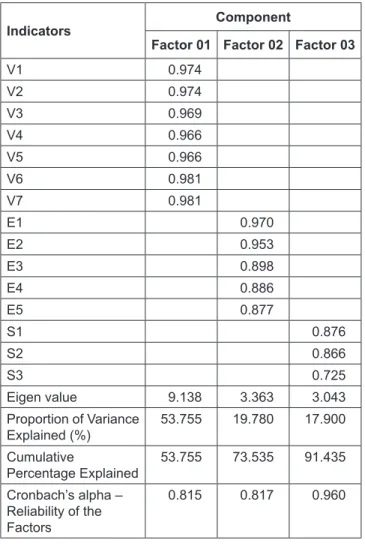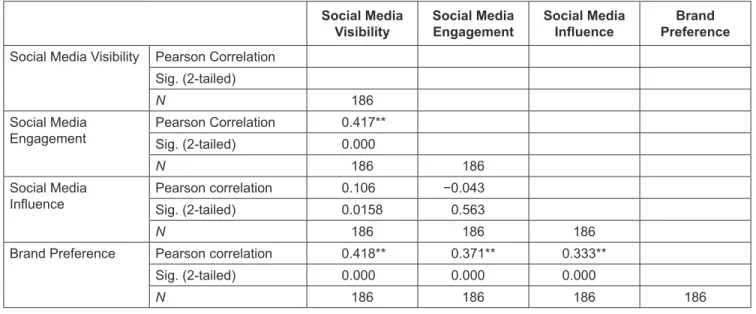Print ISSN: 2288-4637 / Online ISSN 2288-4645 doi:10.13106/jafeb.2021.vol8.no8.0241
Nexus Between Social Media and Brand Preference of Smart Mobile Phones: An Empirical Study in Sri Lanka*
Vasanthakumar KUMARADEEPAN
1Received: April 10, 2021 Revised: June 26, 2021 Accepted: July 04, 2021
Abstract
The aim of the research is to evaluate the impact of social media marketing (with special reference to Facebook) on the brand preference of customers with regard to smart mobile phones. Since Facebook has become very popular today and a trend has arisen to use social media as a marketing tool, the researcher intended to evaluate the impact of social media marketing on brand preference, as the findings would provide valuable insight for future businesses. Social media as measured social media visibility, social media engagement, and social media influencewas the independent variableand brand preference was the dependent variable. The convenience sampling method was used where the sample was taken from a group of people easy to contact or to reach. A sample of 186 young males and females was selected. Factor loading and factor analysis were used to analyze the data and find the most influencing factors on brand preference. Reliability analysis, validity analysis, and regression analysiswere performed to analyze the data. The R
2value is 0.320 implying that 32.00% of the variance in brand preference is explained by social media influence, social media engagement, and social media visibility. The findings show thatsocial media visibility, social media engagement, and social media influencehave a positive impact on brand preference.
Keywords: Social Media, Facebook, Brand Preference, Social Media Visibility, Social Media Engagement, Sri Lanka JEL Classification Code: D11, M31, M37, M51, L82
Windows Mobile are among the most common mobile operating systems. Since many brands are constantly innovating and upgrading their products, the smartphone market has become extremely competitive. Leading smartphone manufacturers such as Apple, Samsung, and Huawei together own a large market share. There are more than three billion smartphone users worldwide, with that number expected to rise in coming years.
Sri Lanka has more than 23 million mobile connections and more than five million active Internet users, according to the “Telecommunication Regulation Commission of Sri Lanka”. According to GSMA Intelligence, as of 2020, Sri Lanka had 24.7 million mobile links. According to the study of “Asia-Pacific Digital, Social, and Mobile 2015” released by ‘We Are Social’ and “IAB Singapore”, in 2015, Sri Lanka had 27.4 million mobile connections and 4.79 million active Internet users. Social networking has grown in popularity and influence as the use of the Internet and mobile phones have increased. Facebook, Flickr, Google+, Instagram, LinkedIn, MySpace, Snap Chat, Twitter, WeChat, WhatsApp, and YouTube are only a few of the well-known social media platforms. According to a study conducted by the Pew Research Center in the
*Acknowledgements:
It’s my privilege to thanks the respondents who have shared their opinion on data collection and to everyone who has supported completing this task.
1
First Author and Corresponding Author. Senior Lecturer, Department of Marketing, Faculty of Management Studies and Commerce, University of Jaffna, Sri Lanka [Postal Address:
Thirunelveli, Jaffna, Northern Province, 040000, Sri Lanka]
Email: kumaradeepan@univ.jfn.ac.lk
© Copyright: The Author(s)
This is an Open Access article distributed under the terms of the Creative Commons Attribution Non-Commercial License (https://creativecommons.org/licenses/by-nc/4.0/) which permits unrestricted non-commercial use, distribution, and reproduction in any medium, provided the original work is properly cited.



